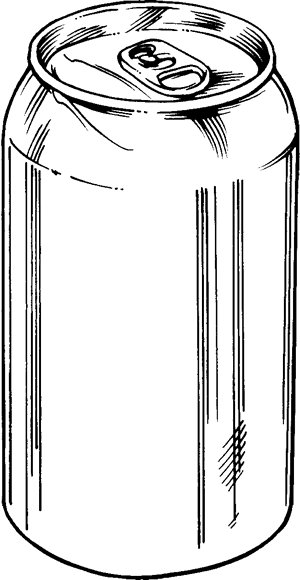
Error codes are like the cryptic messages your AC sends when it’s not feeling quite right. Think of them as the appliance’s way of waving a little red flag, saying, “Hey, something’s up here!” In the case of GE air conditioners, the “LE” error code typically indicates a problem with the unit’s voltage, suggesting that the electrical current isn’t flowing as smoothly as it should. Ignoring this error code might seem like an easy path—after all, if the AC still blows cold air, why worry, right? But here’s the deal: dismissing the LE error can lead to bigger, potentially more expensive issues down the line.
Understanding the “LE” Error Code
The “LE” error code on a GE air conditioner is your unit’s way of hinting at an electrical issue. Imagine trying to water plants with a hose that has a kink; the water trickles out rather than flowing freely. Similarly, this error suggests that the voltage supply to your AC might be inconsistent, causing it to work less efficiently. It could be triggered by something as simple as a temporary power surge or as complex as a persistent wiring issue.
You might be wondering, “Why does voltage matter so much?” Well, just like how a car runs best on the right fuel, your AC needs the right amount of voltage to operate correctly. Insufficient voltage can cause the system to strain, reducing its cooling effectiveness and efficiency. Over time, this strain can wear down the internal components of your air conditioner, leading to more frequent breakdowns and a shorter lifespan for the unit.
If you’re facing the “LE” error code, the first step is to stay calm. Investigate the power source your AC is connected to. Sometimes, the issue might be external, such as a problem with the wall outlet or circuit. If you’ve double-checked these and the error persists, it might be time to call in a professional technician. They can dig deeper and ensure everything’s wired up correctly.
Potential Risks of Ignoring the Error
Choosing to overlook the “LE” error code on your GE air conditioner is like ignoring a slowly leaking roof. At first, it might seem like a non-issue, something you can deal with later. But as time passes, that little leak could lead to water damage, mold, and more expensive repairs. In the same way, ignoring the LE error can escalate minor electrical issues into major mechanical failures.
Ignoring this error doesn’t just impact your AC. It can also affect your energy bills. A unit operating inefficiently due to voltage issues will likely use more power, which can inflate your electricity costs. Think of it like leaving all the lights on in your house 24/7; it might not seem significant until the bill arrives.
Moreover, safety is a crucial consideration. Electrical problems can sometimes lead to overheating or, in worst-case scenarios, electrical fires. While these outcomes are rare, they’re not impossible. Addressing the “LE” error promptly ensures you’re not taking unnecessary risks with your home’s safety.
In short, addressing the error when it’s small and manageable can save you a heap of trouble and money in the future. Consider it an investment in peace of mind and the longevity of your air conditioner.
Steps to Resolve the “LE” Error Code
Now, let’s tackle the question: what should you do if your AC shows an LE error code? Step one, as mentioned earlier, is to check the basics. Ensure that your air conditioner is properly plugged in, and that the outlet is functioning. It’s worth inspecting other appliances on the same circuit to ensure they’re not drawing too much power concurrently.
If the basics don’t reveal any issues, then it’s time to consider professional help. A certified technician can perform a comprehensive check to diagnose specific parts like capacitors or the control board. They have the expertise and tools to measure voltage and current accurately, pinpointing any irregularities that could lead to the LE error.
Meanwhile, take this opportunity to ensure your AC unit is well-maintained. Simple maintenance tasks, like cleaning or replacing air filters, checking for obstructions in airflow, and ensuring the unit’s exterior is clean, can work wonders in preventing avoidable issues.
Remember, a well-maintained air conditioning unit is not just about comfort; it’s about efficiency and long-term savings. Regular maintenance checks and addressing error codes promptly will keep your unit in top shape.
Preventative Measures for the Future
Keeping your cool when faced with an error code is one thing; ensuring it doesn’t happen again is another. To minimize the chances of seeing “LE” or any other error codes in the future, consider implementing some preventative measures.
Think of your air conditioner like a car; regular tune-ups can help it run smoother and more efficiently. Scheduling seasonal maintenance with a professional can help detect potential issues before they become serious problems. It can also improve the unit’s overall performance during peak usage periods, like those sweltering summer months.
Also, pay attention to the environment around your air conditioner. Ensure the space is well-ventilated, as poor airflow can cause the unit to overwork itself. Additionally, try to keep the unit’s surroundings free from dust and debris. A clean, unobstructed unit is less likely to face overheating issues or suffer from internal failures.
Finally, consider investing in a surge protector for your AC. Just like you would protect your computer or TV, a surge protector can shield your air conditioner from unexpected power spikes, thereby reducing the likelihood of voltage-related errors.
In conclusion, while it might be tempting to ignore the LE error code and hope for the best, addressing it head-on is the smart move. By understanding what it means and taking action promptly, you can ensure your GE air conditioner keeps running smoothly and efficiently, keeping you cool and comfortable all summer long.